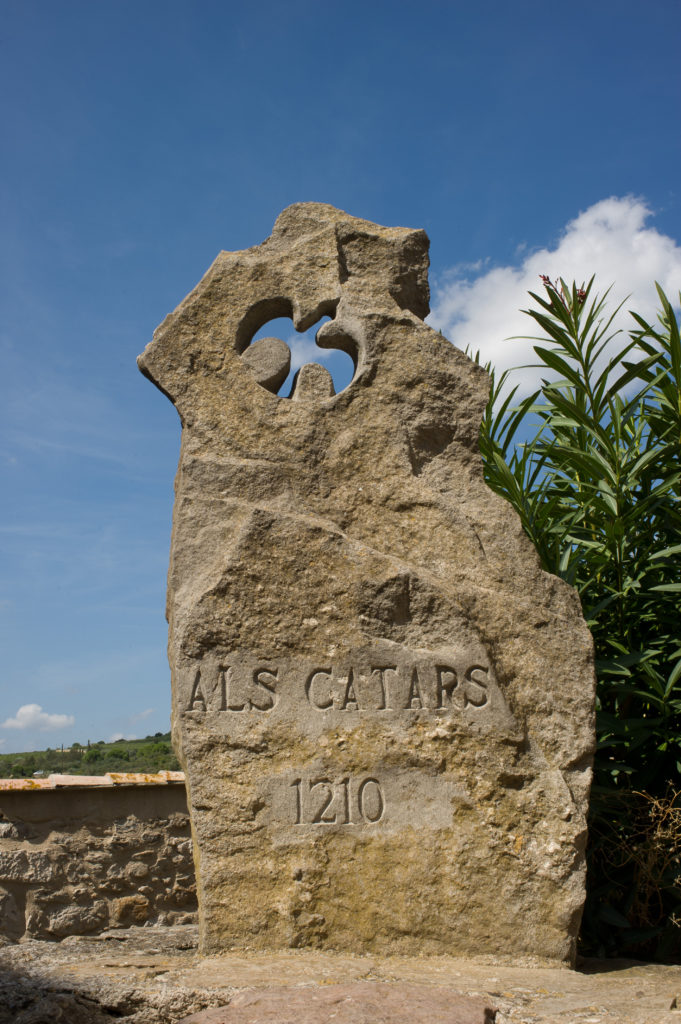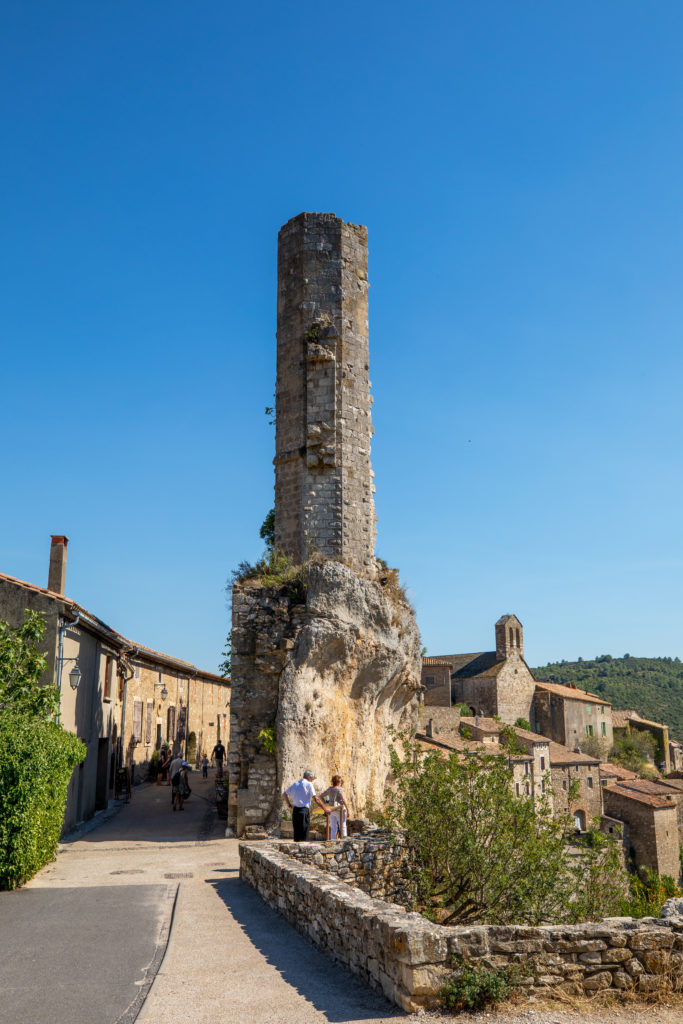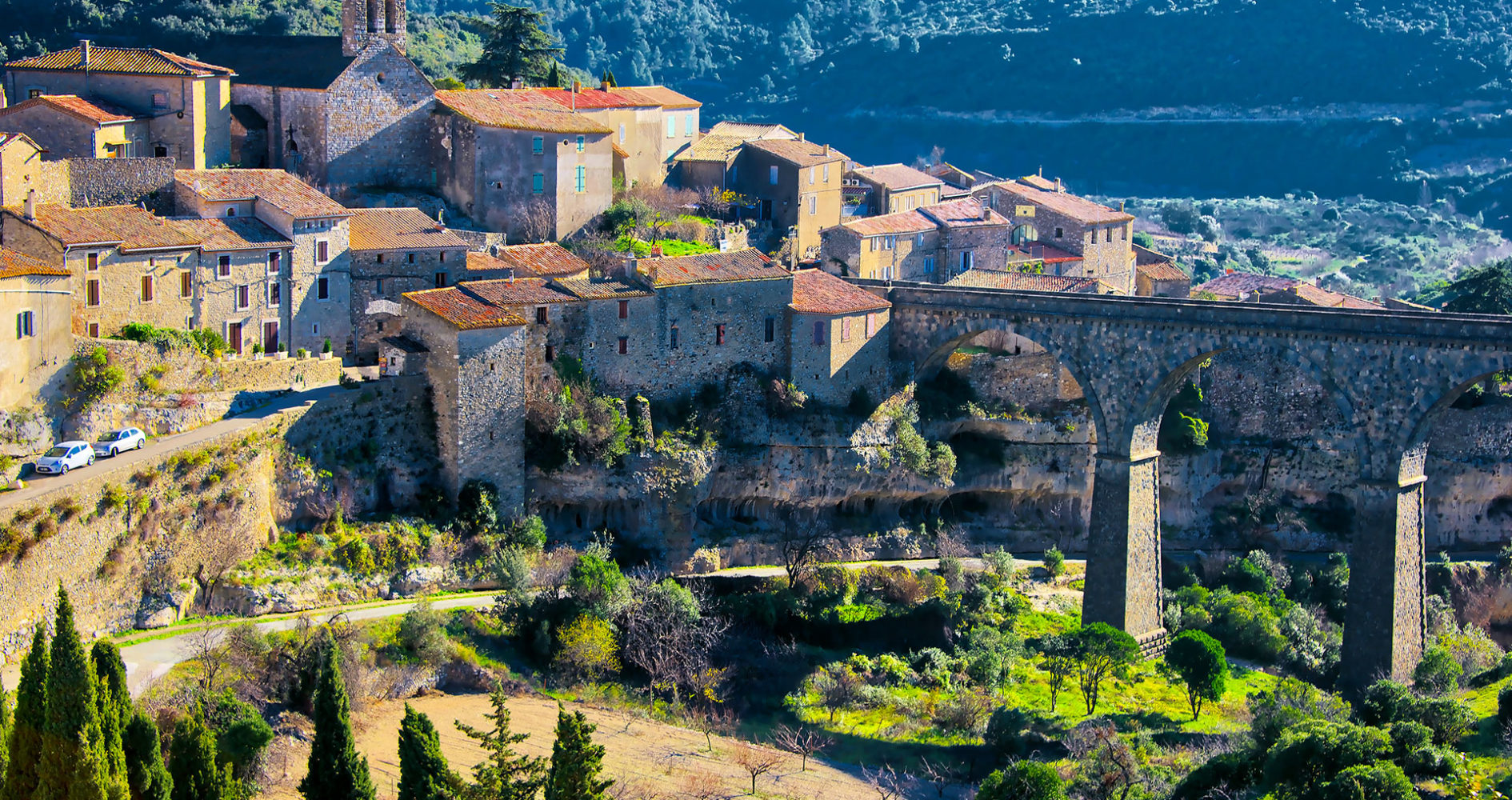The listed village of Minerve#Natural History
Minerve is the historic capital of the Minervois region, a key link between the upper and lower Languedoc. Nestled between the Canal du Midi and the Montagne Noire, straddling the Aude and Hérault départements, the ancient Cathar town offers a veritable journey back in time, where history and nature intertwine. Discovery.
A PEACEFUL MEDIEVAL TOWN
CLASSIFIED#Most beautiful villages in France
Perched on a rocky outcrop surrounded by the gorges of the Cesse and Brian rivers, 30 km from our campsite in the Corbières Minervois region, Minerve is a peaceful medieval town nestled between vineyards and garrigue, which can be discovered along the Cathar paths. Classified as one of France’s most beautiful villages, this village of 120 inhabitants is rooted in a long and painful history.
The village already existed in the Bronze Age, around 2000 BC. Dolmens, tumuli and oppida bear witness to this as you make your way up the Cesse towards Cantignergues. The site was dedicated by the Gauls to the goddess Minerva, before being occupied by the Roman legions and then the Visigoths.
During the High Middle Ages, Minerve became a powerful city. The Viscounts of Minerve reigned supreme over the Minervois region. But the most important event in Minerve’s history is undoubtedly the “Albigensian Crusade”.
The story of the Cathars
from Minerve#Tragic history
The city of Minerve is forever marked by the martyrdom of the Cathars and the “crusade against the Albigensians”. In the early 13th century, the Crusaders forced the Cathars to convert. To escape persecution by the Church of Rome, they sought refuge in the most isolated strongholds of the upper and lower Languedoc, notably Minerve.
Simon de Montfort, military leader of the Crusade, laid siege to the impregnable city for five weeks. Constantly pounded by catapults and trebuchets, without food or water, the Viscount of Minerve was forced to capitulate on July 22, 1210. Refusing to renounce their faith, 140 Cathars were condemned to the stake in 1210, as a result of which Minerve became part of the French crown.


Places to visit in Minerve
- La Candela: you enter the town of Minerve at the site of the Viscount’s castle. The Candela (Occitan for candle) tower is the last vestige of the castle built in the 13th century. A few fragments of the ramparts are visible from the Brian valley.
- La Malvoisine: to the east of the village, on a cliff, you can see a replica of the “Malvoisine”, the most powerful catapult used to besiege the Minerve citadel in 1210.
- Saint-Étienne church: built near the château, this pretty Romanesque church features a remarkable white marble altar, the oldest in France (5th century).
- La Colombe de lumière: stele dedicated to the Cathars condemned to the stake, created by sculptor Jean-Luc Séverac in 1982.
- Musée Hurepel: located in the heart of the town, in Rue des Martyrs, a small museum traces the history of the Cathar Parfaits of Minerve (dioramas, hand-painted clay knights, medieval bookshop dedicated to Catharism).
- The Saint-Rustique well: the pathway, cut into the cliff, leads to the Saint-Rustique well, to the east of the village. It was by destroying it that Simon de Montfort, leader of the Crusader army against the Albigensians, secured victory over the Cathars.
Landscapes and terroir
Nestled in the heart of the Parc Naturel Régional du Haut-Languedoc, the Minerve natural site is one of the most remarkable in Occitanie. Visitors will be amazed by the striking duality between nature and buildings: the spectacular natural bridges carved out by the Cesse and Brian rivers, the causse fissured into avens and pierced by caves such as the Coquille, four kilometers upstream. It’s a real eye-opener!
The area’s low altitude (between 200 and 500 m) means it acts as a frontier between this wilderness and the rich wine-growing area of the Minervois hillsides, where red, rosé and white wines are produced. The winegrowers of Minerve welcome you all summer long to the cellars of the Cité. Cheese and honey are also produced in the north, blending the scents of the causse with those of the vines planted by the Romans.


